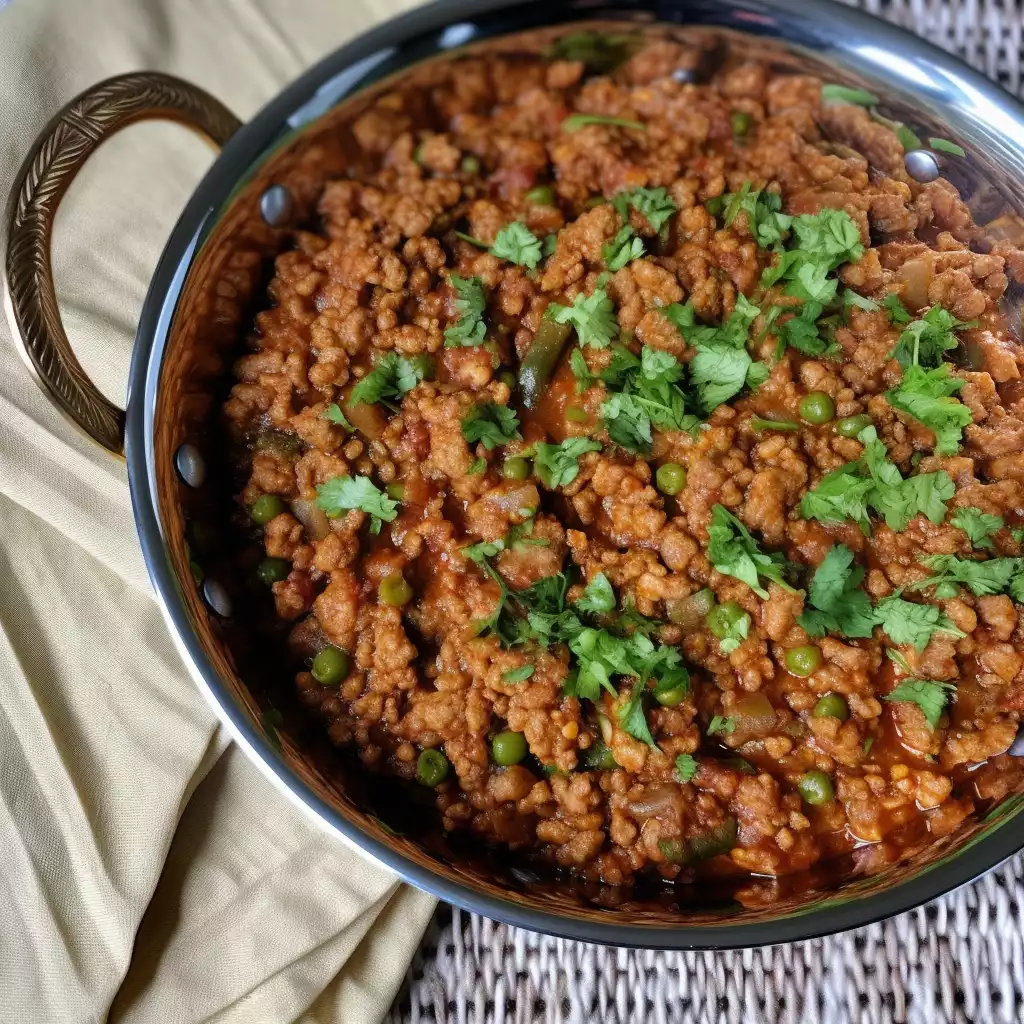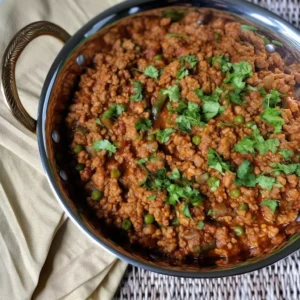
Keema Karahi originating from the heart of South Asia, this dish is a delightful blend of minced meat cooked in a flavorful spice mix, creating a symphony of taste and aroma that is sure to tantalize your taste buds.
While the traditional recipe calls for beef, you can easily customize it with lamb or chicken according to your preference.
Keema Karahi, though rich in flavors, is surprisingly easy to prepare, making it an ideal choice for both novice and seasoned cooks alike. With just a handful of ingredients and simple cooking techniques, you can whip up a mouthwatering dish that will impress your family and friends.
The secret behind the deliciousness of Keema Karahi lies in the harmonious combination of spices like coriander, cumin, turmeric, chili powder, and garam masala, which infuse the minced meat with layers of flavor.
Expert Tip: For a vegetarian version, substitute the minced meat with textured vegetable protein (TVP) or cooked lentils for a hearty and nutritious alternative.
Mince Beef, Lamb, or Chicken: Minced meat adds protein and richness to the dish. It absorbs the flavors of the spices and vegetables, resulting in a savory and satisfying meal.
Oil: Used for sautéing the onions and cooking the meat, oil adds richness and helps in achieving the desired texture of the dish.
Onion: Finely chopped onions not only provide a sweet and savory base to the dish but also add depth of flavor and aroma when caramelized.
Garlic: Minced garlic lends a pungent and aromatic flavor to the dish, enhancing its overall taste profile.
Ginger: Grated ginger adds warmth and a subtle spiciness to the dish, complementing the other spices and ingredients.
Tomatoes: Chopped tomatoes contribute acidity and sweetness to the dish, balancing the flavors of the spices and meat.
Coriander Powder: Ground coriander adds a citrusy and earthy flavor to the dish, enhancing its aromatic profile.
Cumin Powder: Cumin powder provides a warm and slightly nutty flavor, enhancing the overall depth of the spice mix.
Turmeric Powder: Turmeric powder adds vibrant color and a mild earthy flavor to the dish, along with its health benefits.
Chilli Powder: Red chili powder adds heat and spiciness to the dish, allowing you to adjust the level of heat according to your preference.
Garam Masala: A blend of ground spices, garam masala adds warmth and complexity to the dish, tying together all the flavors.
Salt: Essential for seasoning, salt enhances the taste of the dish and helps balance the flavors of the other ingredients.
Peas: Frozen peas add sweetness, color, and texture to the dish, providing a delightful contrast to the rich and savory minced meat.
Coriander: Fresh coriander leaves, used as a garnish, add a burst of freshness and bright flavor to the finished dish, elevating its presentation and taste.
Expert Tip: To enhance the aroma of the dish, lightly toast whole spices such as cumin seeds and coriander seeds before grinding them into a powder.
Expert Tip: For a richer flavor, use a combination of beef and lamb mince.
You can easily adjust the spice level of Keema Karahi by varying the amount of chili powder used in the recipe. Start with a smaller quantity if you prefer a milder flavor, and gradually increase it according to your taste preferences.
Can I use frozen minced meat for this recipe?
Yes, you can use frozen minced meat for Keema Karahi. Ensure that the meat is thoroughly thawed before cooking, and drain any excess moisture to prevent the dish from becoming watery.
Yes, you can prepare Keema Karahi in advance and store it in the refrigerator for up to 2-3 days. Simply reheat it gently on the stovetop or in the microwave before serving, and adjust the seasoning if necessary.
Yes, Keema Karahi can be frozen for longer storage. Allow the dish to cool completely, then transfer it to an airtight container or freezer bag and freeze for up to 2-3 months. Thaw overnight in the refrigerator before reheating and serving.
If you prefer, you can substitute peas with other vegetables such as diced carrots, bell peppers, or green beans. Adjust the cooking time accordingly to ensure that the vegetables are cooked to your desired level of tenderness.
Here are some more recipes for you to enjoy! If you my recipes don’t forget to rate and leave a comment.
If you have any recipe suggestions, please do not hesitate to ask me. A great way to stay in contact with me is through Instagram, Facebook, Twitter and YouTube. Don’t forget to tag me @CookwithNabeela in your recipe photos!

Subscribe now to receive my latest recipes directly in your inbox. Stay up-to-date and never miss out!

I love to cook! I want to share with you my favourite, delicious family-friendly recipes. I want to inspire you to create fantastic food for your family every day.
Add your first comment to this post